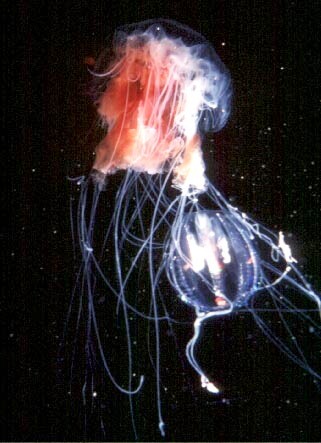Catching Bigger, Stronger and Faster Prey
Luke 1:37
“For with God nothing shall be impossible.”
At first glance, jellyfish may not look like much of a creation. Many are quite beautiful. However, most jellyfish simply look like blobs of jelly, so fragile that what might be a minor blow to one of us could prove fatal to them.
 There are around 500 species of jellyfish. They live everywhere in the oceans – from the surface down to great depths. Some are as small as a BB. The largest jellyfish is the lion’s mane, which can grow to seven feet in diameter and have tentacles 200 feet long.
There are around 500 species of jellyfish. They live everywhere in the oceans – from the surface down to great depths. Some are as small as a BB. The largest jellyfish is the lion’s mane, which can grow to seven feet in diameter and have tentacles 200 feet long.
Despite their apparent simplicity, these insubstantial creatures make their living by capturing and eating fish and crustaceans that could easily tear them apart. To accomplish this seemingly impossible task, the jellyfish trails out its long thread-like tentacles. Each tentacle can have millions of capsules loaded with tiny harpoons. Once touched, the tentacles fire, injecting several deadly toxins. If enough toxin is injected, the victim’s heart stops. If not enough of this poison is injected, another toxin finds its way to the brain where it stops respiration. Yet another toxin bursts red blood cells, disrupting the circulatory system. Thankfully, only a few dozen of the hundreds of species of jellyfish can hurt human beings.
Imagine trying to design a creature that is not much more than a bag of Jell-O that can capture and subdue much larger and more powerful creatures. The jellyfish may look simple. However, its specialized design for a seemingly impossible task makes it an elegant witness to our Creator.
Prayer:
Heavenly Father, help me to remember that nothing is beyond Your ability and wisdom in the material world, especially when I face problems and am tempted to rely on myself for a solution. In Jesus’ Name. Amen.
Notes:
Brownlee, Shannon. 1987. “Jellyfish aren’t out to get us.” Discover, Aug. p. 47.